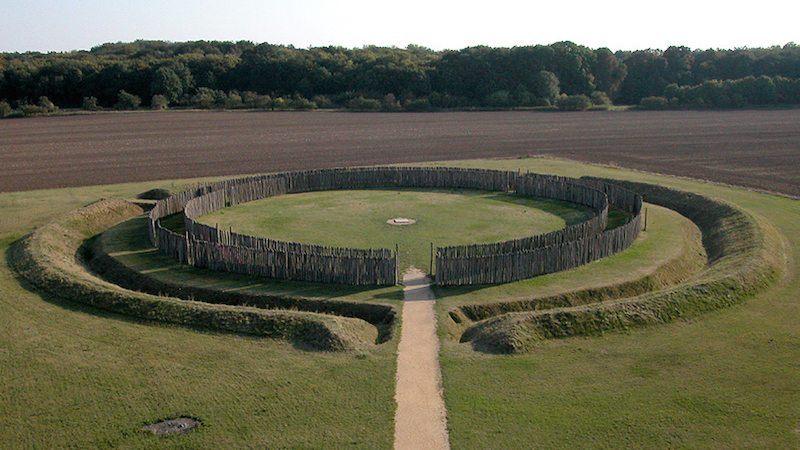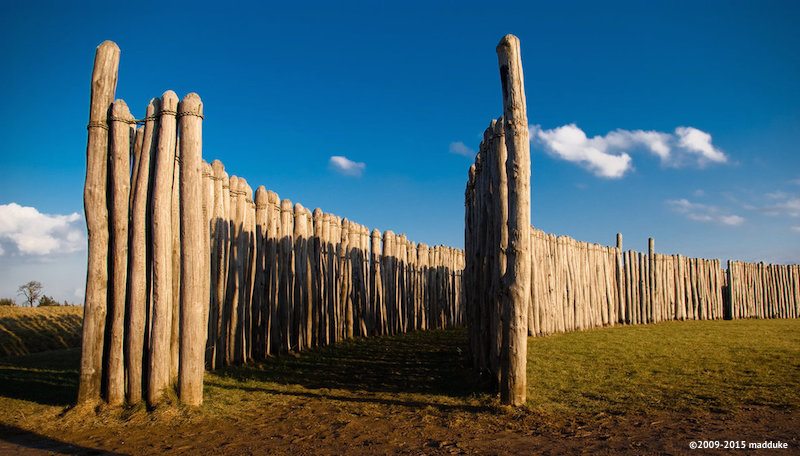Goseck Circle
Episode #10 of the course “Mysterious World Landmarks”
The world’s oldest solar observatory, the Goseck circle in Goseck, Germany was built in approximately 5000 BCE—over 7,000 years ago. It was probably actively used for about 200 years after its construction but then likely fell into ruin and was never revived. Originally, it would have had four concentric circles, two wooden palisades, a ditch, and a central mound. The Goseck circle site was discovered in 1991, when a drought allowed the shape to be seen in a wheat field. At approximately 220 feet in diameter, the trench aligns with the summer and winter solstices and may have been utilized for religious ceremonies.
Researchers have found other Paleolithic artifacts in the area, such as pottery and tools, which have helped them identify more about the cultures of the people who lived there. Their pottery was made of soft clay, which was decorated with a fork-like instrument that created zig-zag lines before the clay hardened. Because there is no written record of the people who built and used the Goseck circle, the most that anthropologists know about them is their religion. Human and animal bones that indicate sacrifices have also been found on or near the Goseck circle.
The Goseck circle is on the same latitude as Stonehenge, in addition to being aligned with celestial events, which causes people to connect both the structures’ purposes with ancient astronomy. This has changed the way that anthropologists and historians view and study Neolithic people—these ancient people had not been believed to be measuring heavenly activity until centuries later.
Share with friends


